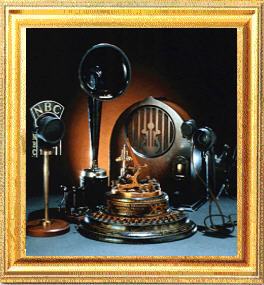Loomis and Stubblefield



Who Really "Invented" Radio?
If one were asked who invented the radio, chances are the answer would be
"Marconi" and, in the strictest sense of the term "radio", this would be correct. However, Guglielmo
Marconi was only the last in a long line of contributors toward the development of his
famed transatlantic broadcast of December 1901. In reality, though, the earliest known
demonstrations to send wireless messages across great distances occurred years before
Marconi was born.
Mahlon Loomis is almost a forgotten name. As early as 1866, Doctor Loomis - a dentist
by trade - experimented extensively with electricity and succeeded in developing an
electrical system where by he was able to convey a signal 20 miles through the ether, as
it was thought of in that day. Loomis' system involved conducting large currents of
electricity through salt water puddles and kites flown by wires. A galvanometer was
connected to a similar receiving kite, and when the transmitting kite was charged with
electricity, it caused the galvanometer to deflect at the receiving area. Although this was
not a true Hertzian wave application, it did indisputably constitute a man-made signal and
might have been profitably exploited had he realized the potential. However, Loomis fell
into obscurity and eventually died in the opinion that he was a failure.
Another equally obscure experimenter was Nathan Stubblefield of Murray, Kentucky. He
devised a huge coil attached to an early telephone-like mouthpiece. By grounding his
equipment, he was able to communicate actual voice communications without wires.
Stubblefield patented his "Vibrating Telephone" in 1888 when Marconi was an adolescent
boy. Congress visited Stubblefield's demonstration in January 1902 and the St. Louis
Post-Dispatch carried a full-page article on the miraculous experiment. A bill was
introduced in Congress to appropriate $50,000 for development of Mr. Stubblefield's work.
But something happened. The money was never forthcoming. The market went bad;
Black Friday ruined many; fires and other bad luck forced Stubblefield to give up. He
died a penniless and starving heartbroken farmer at his Murray, Kentucky home in 1928.
A small roadside historical marker indicates his resting place, and nearby Murray State
University houses his meager effects. The museum has a model of the curious coil and
phone apparatus. And today, Marconi still is considered the inventor of wireless
broadcasting.
-From the book, "DXing According to NASWA," by Edward Shaw, with his kind
permission!

© 1996-2017 by Lin Robertson at Moonlight Systems
All Rights Reserved
(Click here for Copyright info)
Thoughts? Comments? Brickbats? Send me some e-mail!






